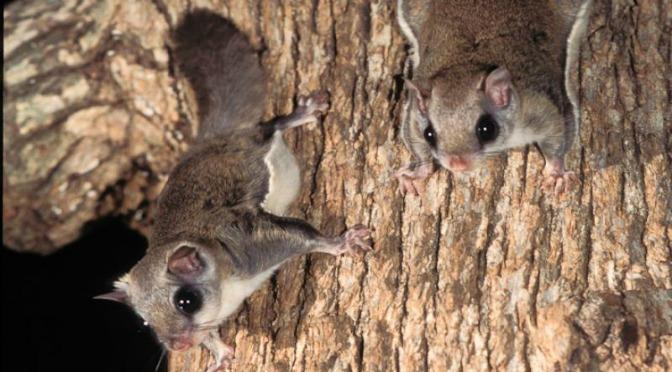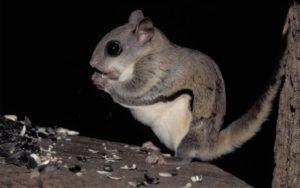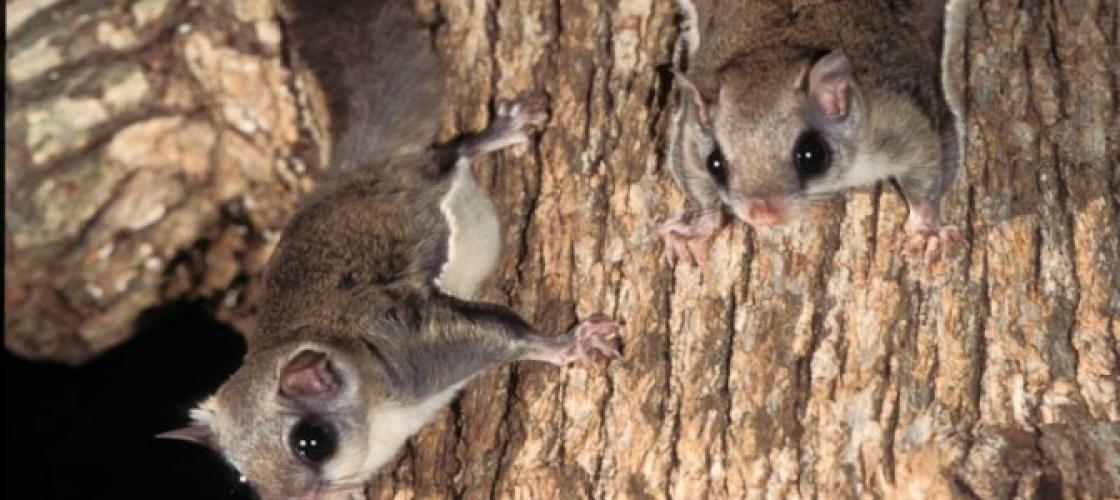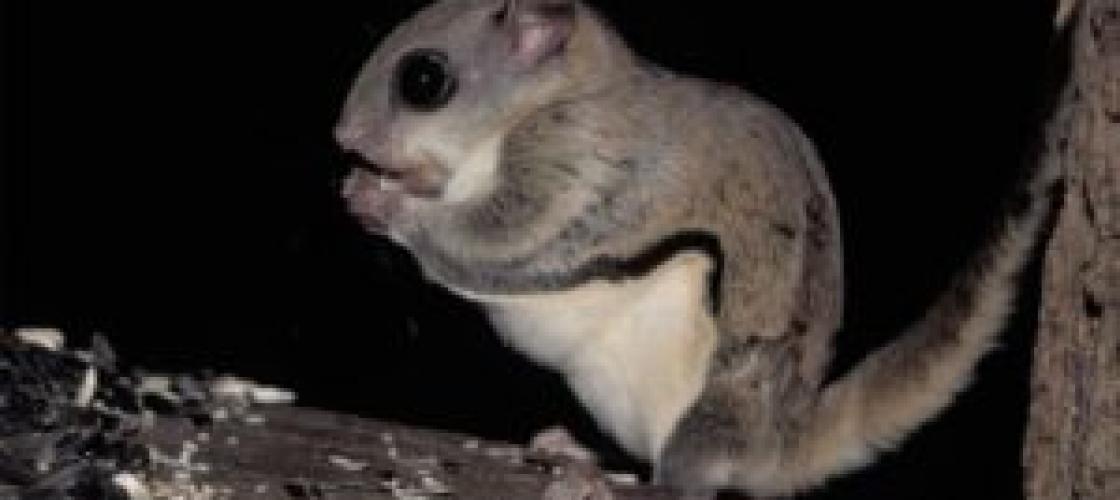It's a bird! It's a plane! It's a... flying squirrel?!
If you venture out near the woods after dark, you might hear the high-pitched cry of a flying squirrel. Flying squirrels can be common near extensive woods, where they are active only at night. Flying squirrels are small relatives of gray and fox squirrels. They are about five inches long and weigh a little more than a king-size chocolate bar.
Bats are the only mammals that truly fly -- flying squirrels do not. They don't have wings. Instead, a loose fold of skin extends from wrist to ankle. When they extend their front and hind legs, the membrane stretches out and supports the squirrel in a glide for long distances. They use their broad, flat tails to steer. Although they can glide one-third the length of a football field, they more often glide two or three car lengths.
Flying squirrels live in tree cavities, often those created by woodpeckers. In residential areas, they will use birdhouses placed 20 to 30 feet above the ground. Flying squirrels can be attracted to a platform feeder with sunflower seeds, peanut better, and other nuts and suet.
You can sometimes hear flying squirrels call from treetops. You might also hear soft thumping noises when they land, or the sound of their scurrying feet on tree trunks, rooftops or even attics.
Fast Facts: Flying Squirrel
- Northern flying squirrels (Glaucomys sabrinus) and southern flying squirrels are the only two native flying squirrel species found in North America.
- Size is one way to tell northern and southern flying squirrels apart. The southern species is smaller, about 8 to 10 inches in length. Northern flying squirrels are 10 to 12 inches long.
- Once a flying squirrel lands on a tree trunk following a flight, they promptly scurry to the other side of the trunk to avoid any predators that may have followed them. Nevertheless, owls, hawks, tree snakes, and climbing mammals frequently manage to catch and consume these tiny rodents.
- Flying squirrels can live up to 10 years in captivity, or about half that in the wild.
- Humans have long been envious of the flying squirrel’s gliding abilities. Base jumpers and skydivers have developed a special suit that mimics the flying squirrel. The suit works to slow their descent and allows them to maneuver through the air.
Additional facts courtesy of the National Wildlife Federation.




Recent Posts
























